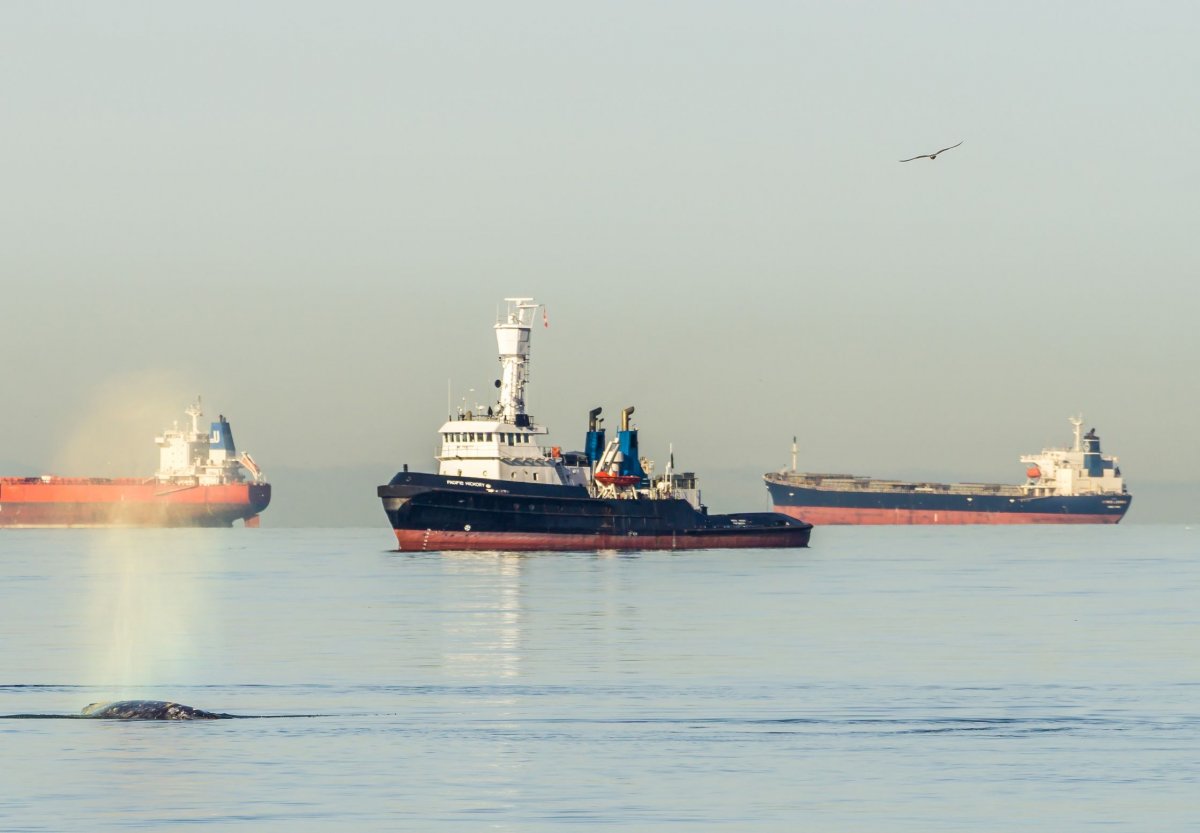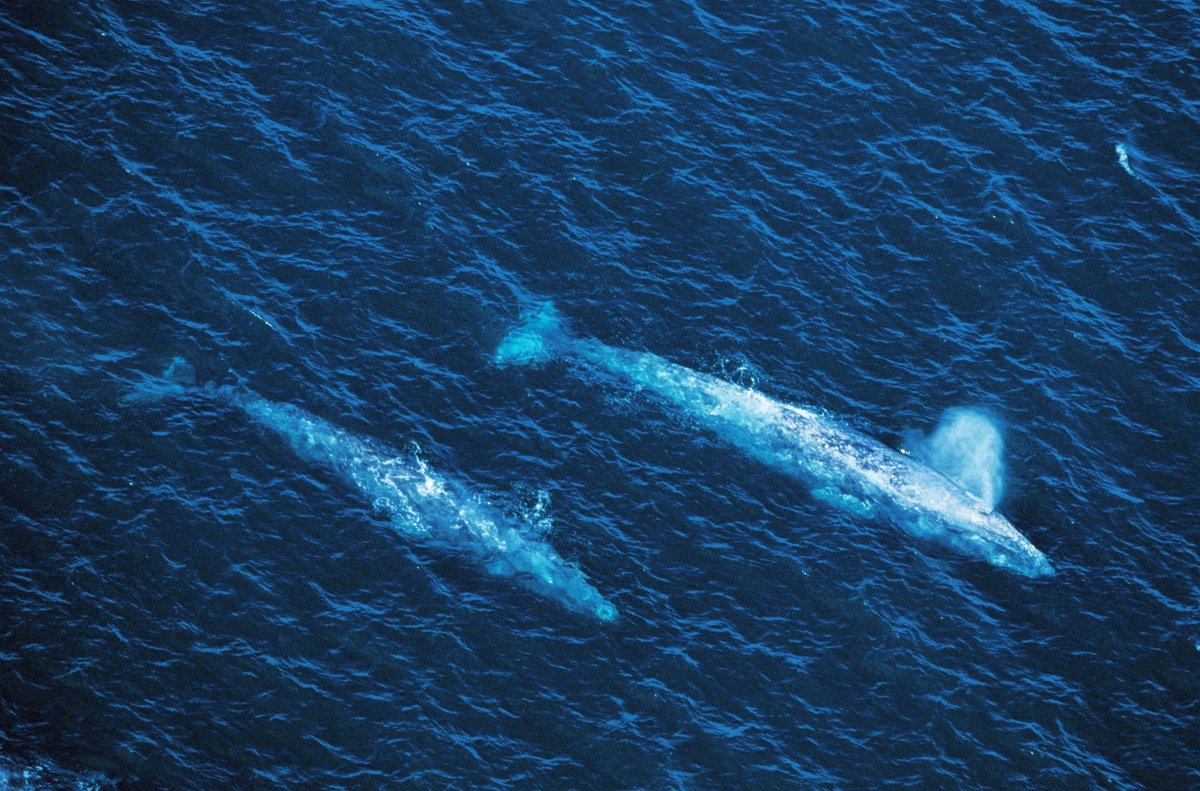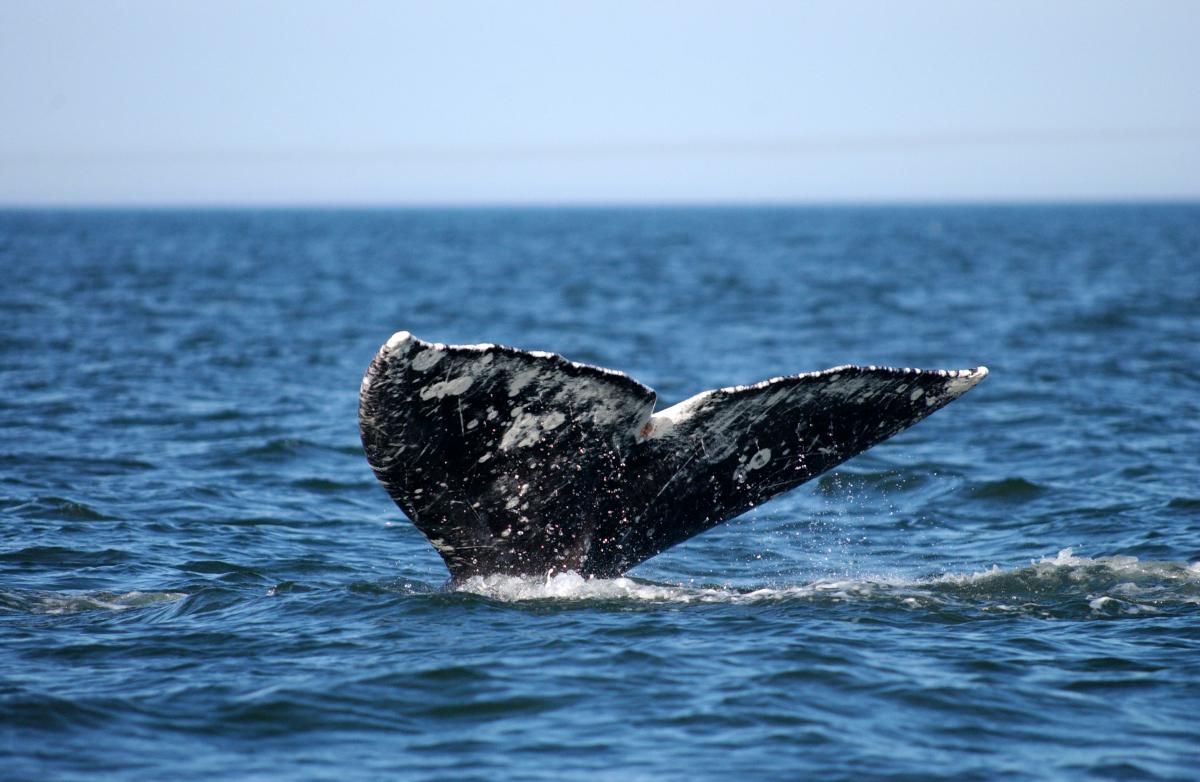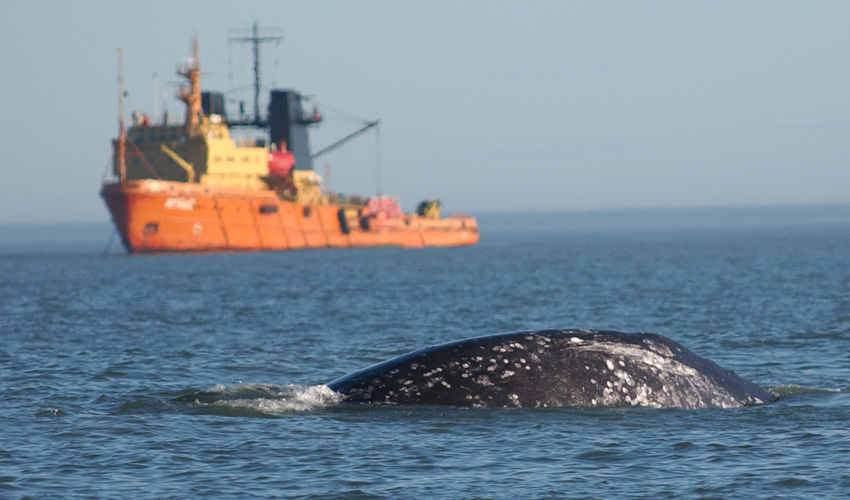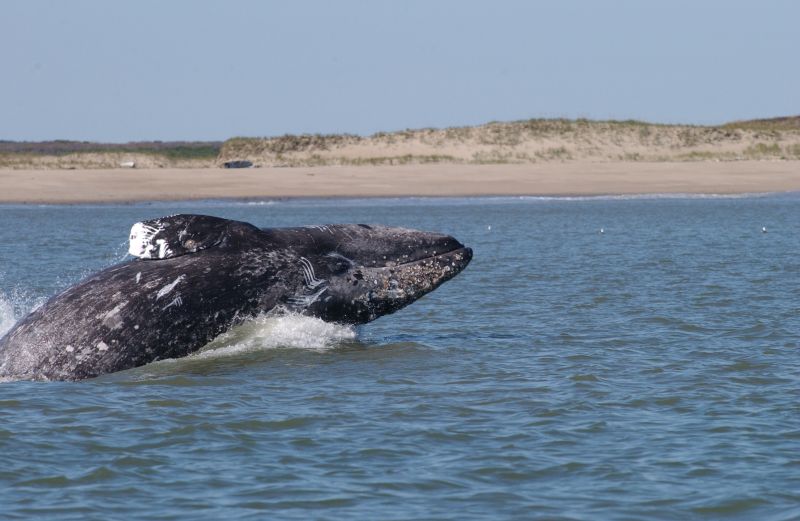New IUCN-backed study finds gray whales at high risk from ship strikes in the North Pacific Ocean
Gland, Switzerland (IUCN) – Ships operating in the North Pacific pose a serious threat to gray whales (Eschrichtius robustus), according to the first scientific study that examines the impacts of vessel traffic on the species throughout its range.
In particular, gray whales are at “high risk” from large ships operating in the Bering Sea (including the Aleutian Islands), Gulf of Alaska, along the entire west coast of North America, as well as near Kamchatka and in the Okhotsk Sea in the Russian Far East. An area of relatively high risk was also evident near Russia’s Sakhalin Island, where the Endangered western population of less than 250 whales feed every summer and autumn.
The study, published in the journal Endangered Species Research, found that the risk to gray whales appears greatest during their north and southbound migration, when much of the population is moving through waters with heavy vessel traffic. It found that areas of very high vessel density were evident year-round near many coastlines, along inter-continental trade routes, and at hubs of commercial shipping near port entrances.
It further suggests that fishing vessels are likely to pose substantial additional risk to the species, given the large number of commercial fisheries operating in North Pacific waters.
“All whale species are susceptible to vessel strikes, but the range-wide risk of strikes of gray whales is not known,” said Gregory Silber of Smultea Environmental Sciences, the lead author of the paper and a member of IUCN’s Western Gray Whale Advisory Panel (WGWAP). “However, fatal or debilitating ship strikes of gray whales are more common than strikes of other North Pacific whales, such as humpback, fin and blue whales. The number of strikes of gray whales may range from the tens to low hundreds every year.”
The authors mapped specific geographical areas where gray whale habitats intersect with high-density vessel traffic areas. Based on these “heat maps”, they identified locations that signal a conservation concern, both in terms of ship strikes and exposure to elevated underwater noise from vessels.
The study highlights the need to design measures to reduce gray whale mortality and injury from ship strikes. The authors suggest measures, such as establishing new navigation corridors, using speed limits, or placing marine mammal observers aboard ships to detect whales and advise captains to reduce speed or change course. Also, improved monitoring and reporting of vessel strikes and near misses would help scientists and managers assess and reduce the risk to whales.
“The volume of vessel traffic associated with offshore energy development is of particular concern when operations occur near areas, such as Sakhalin, where gray whales aggregate to feed, or in areas where they overwinter or migrate through. Important efforts have been made by companies like Sakhalin Energy to manage vessel routing and speed in their areas of operation, explicitly to mitigate the risk of striking gray whales, and to date, the company has not recorded any vessel strikes of marine mammals,” said Randall Reeves, Chair of the Cetacean Specialist Group of IUCN’s Species Survival Commission, WGWAP Chair and a co-author of the paper.
“It is also necessary to address cumulative impacts from all human activities likely to affect the whales,” added Dr Reeves. “The abundance of gray whales in the North Pacific is slowly increasing, but so too is vessel traffic and other pressures that put the species’ long-term recovery at risk.”
Since 2004, WGWAP has provided independent scientific advice to Sakhalin Energy and other actors on how to minimize risks to gray whales and their habitat off Russia’s Sakhalin Island, in the Sea of Okhotsk.
“This new study shines a light on one of the ongoing, and perhaps growing, threats to the great whales in this post-whaling era,” said Giulia Carbone, Deputy Director of IUCN’s Business and Biodiversity Programme. “We are proud that the WGWAP recommendations and scientific studies are contributing to advance cetacean conservation at Sakhalin and globally.”
The full study “Co-occurrence of gray whales and vessel traffic in the North Pacific Ocean” is available for download here (open access, including the Russian translation).
For more information:
- please contact Anete Berzina-Rodrigo, IUCN Global Marine and Polar Programme & Global Business and Biodiversity Programme, at +41 79 174 61 86, e-mail: anete.berzina@iucn.org,
- or visit the IUCN’s Western Gray Whale Advisory Panel website.
Background:
- This scientific article was produced within the framework of the WGWAP process. Established 17 years ago by IUCN, WGWAP provides objective independent advice on the conservation of western gray whales with a focus on those that feed off Sakhalin in the Okhotsk Sea. The feeding areas near Sakhalin Island, off the Russian coast, just north of Japan – a region with large offshore oil and gas deposits, and active exploitation of other natural resources – are used by the whales every summer and autumn and are vital for maintenance of the population.
- The western gray whale population that feeds off Sakhalin is listed as an Endangered sub-population on the IUCN Red List of Threatened Species. In Russia, it is known as the ‘Okhotsk Sea population of the gray whale’ and is listed as critically endangered in the Red Data Book of the Russian Federation. In the United States, the population is listed as endangered under the US Endangered Species Act and designated as depleted under the US Marine Mammal Protection Act.
- From 1-5 March 2021, the Russian Marine Mammal Council is organizing the virtual 11th international conference “Marine Mammals of the Holarctic”, where IUCN WGWAP will share knowledge on population management and addressing anthropogenic impacts, including the topic of assessing cumulative effects using a threat severity framework.
